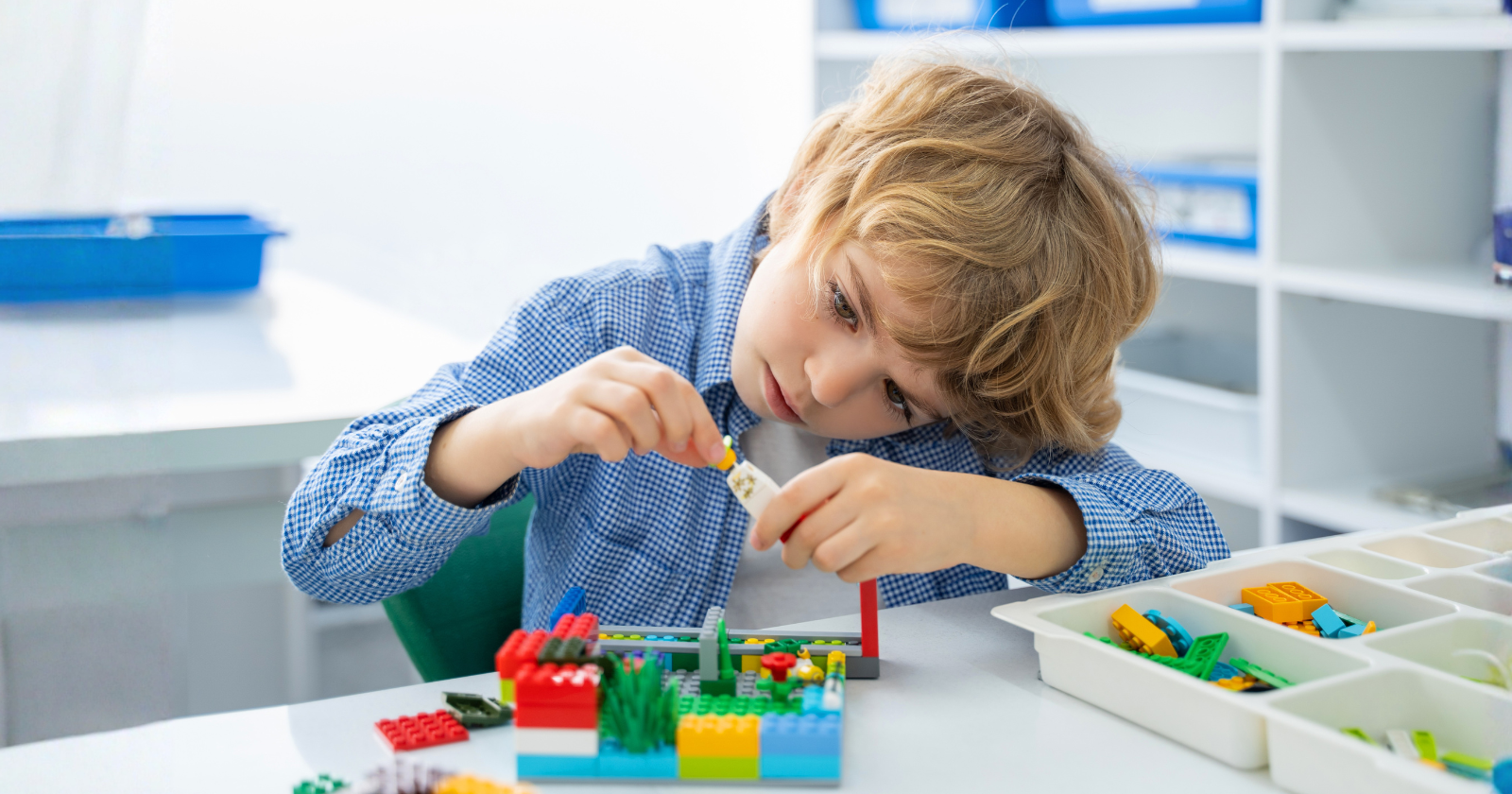Parenting comes with endless choices, but few feel as constant as the ones around toys.
Every birthday, every holiday, every trip down the store aisle brings a flood of bright colors, blinking lights, and promises of “educational fun.”
And yet, so many of those toys end up broken, ignored, or gathering dust at the bottom of a bin by the end of the month.
Over the years, I’ve noticed something: the toys that truly last aren’t the ones with the biggest boxes or the loudest buttons. They’re the ones that invite imagination, movement, creativity, and connection. They’re simple, durable, and open-ended.
The best toys don’t try to do everything for a child. They make space for the child to do the creating.
Here are ten toys that actually keep kids engaged, growing, and smiling long after the novelty fades.
1. Open-ended building sets (like LEGO or magnetic tiles)
There’s a reason these end up on so many “best toy” lists. Building sets meet kids wherever they are developmentally. A toddler can stack pieces into simple towers, while an older child can design entire cities, vehicles, or inventions.
What makes them valuable is how they evolve with your child. They teach patience, creativity, and problem-solving without ever feeling like homework.
My daughter Ellie loves combining her magnetic tiles with wooden animals to make tiny “zoos.” A year ago, those same tiles were just colorful shapes she stacked and knocked over.
If you invest in a quality set and store it well, it can last for years. The pieces are timeless, and new sets can easily blend with old ones. They’re the kind of toy that becomes part of the family rhythm — quiet afternoon play, rainy-day projects, or creative bursts before dinner.
2. Wooden blocks and stacking toys
Wooden blocks might look simple, but their impact is anything but. They develop motor skills, balance, and patience, and they let children experiment with physics long before they ever learn the word.
The tactile feel of wooden blocks is satisfying. Kids learn through touch, and something about the smooth weight of real wood engages their senses in a way plastic rarely does.
These toys don’t outgrow a child quickly either. A two-year-old might build small towers; a five-year-old might create roads, bridges, or imaginary castles.
They also last practically forever. Ours have survived years of play and even a few accidental “hammer” moments from Milo.
There’s a beauty in knowing that a toy could be handed down to the next generation still ready for another round of building and knocking down.
3. Quality art supplies
A box of crayons may not look as exciting as a blinking robot, but give a child real, durable materials — washable paints, beeswax crayons, quality paper — and you’ll see their imagination come alive.
Art supplies are an investment in creativity. They give children freedom to explore and express feelings they may not have words for yet. A set of good materials lasts longer too.
- 8 things introverts wish they could say without being called antisocial - Global English Editing
- 10 things boomers did every Christmas that would completely confuse Gen Z today - Global English Editing
- I’ve interviewed 500+ millionaires, and they all avoid these 7 middle-class money mistakes - Global English Editing
When crayons don’t snap and markers don’t dry out in a week, kids learn to take care of their tools and feel proud of what they create.
Art time also slows everyone down. I often set out watercolor palettes and paper on the kitchen table while I cook. Ellie paints while chatting about her day, and Milo experiments with color. It’s peaceful, grounding, and genuinely fun, a reminder that “simple” doesn’t mean “boring.”
4. Pretend play sets (kitchen, doctor, toolbench)
Imagination needs props, and pretend play sets provide them beautifully. A small kitchen set or doctor’s kit gives children the chance to practice real-world skills in a safe, playful way.
Pretend play builds empathy and problem-solving. When kids “cook” for a stuffed animal or “fix” a toy’s leg, they’re learning about roles, care, and cooperation. They’re making sense of the world by acting it out.
You don’t need an elaborate setup. A few well-made pots, some wooden fruits, and a stethoscope are enough. What matters is that the pieces feel real enough to inspire genuine play.
My kids have spent entire mornings turning their play kitchen into a “restaurant” where I’m the only customer and payment comes in leaves and hugs.
5. Outdoor toys that encourage movement
Movement is a child’s first language, and the best toys help them use it well. Simple outdoor toys like balance bikes, jump ropes, soccer balls, or kites create years of play without clutter.
A good balance bike, for example, teaches coordination and confidence better than most gadgets ever could. The return on investment is huge. They get hours of active play, fresh air, and a healthy dose of independence.
Outdoor toys also create shared memories. Matt often takes the kids to the park with a kite or a ball, and they come home flushed and giggling.
There’s something deeply grounding about watching them move freely, unprompted, in the open air. These toys invite that kind of energy every time you bring them out.
6. Wooden train sets or tracks
Few toys hold a child’s focus like a wooden train set. The process of connecting tracks, figuring out curves, and sending little trains on journeys teaches patience, sequencing, and spatial reasoning.
The quiet concentration that comes with it can be almost meditative. I’ve seen both kids spend long stretches building “towns” with bridges and tunnels, completely absorbed in their own worlds. The repetitive clack of wooden wheels rolling across the track becomes its own kind of comfort.
What I love most is how these sets adapt as children grow. A toddler might push a single train around, while an older child adds storylines and destinations. The pieces rarely wear out, and there’s a satisfaction in knowing you can keep expanding the layout year after year.
7. Musical instruments for kids
Music connects generations, and even the simplest instrument can spark a lifetime of interest. A small keyboard, ukulele, or drum encourages rhythm, coordination, and focus in a way that feels like play.
You don’t need a full set of instruments to start. One quality piece can open the door. Milo’s tiny drum has survived countless jam sessions and still sounds great. Sometimes, the whole family joins in, turning our living room into a noisy but joyful music night.
Musical toys also nurture patience and self-expression. Children learn cause and effect by experimenting with sound, and they gain confidence as they improve. It’s a wonderful blend of creativity and discipline, something few battery-operated toys can offer.
8. Quality puzzles
A good puzzle offers a quiet kind of challenge that strengthens focus and persistence. It’s a simple activity, yet it trains both the mind and the temperament.
Puzzles encourage pattern recognition, hand-eye coordination, and problem-solving. When children find a piece that fits, they experience a small but satisfying win. It’s a reward that builds patience and resilience.
In our home, we often start a puzzle on a rainy afternoon and leave it out to return to the next day. It becomes an unhurried, family-paced project that reminds everyone to slow down and focus on the small victories.
Look for puzzles made of thick cardboard or wood that can handle being pulled apart again and again. They last longer and feel better in little hands.
9. Montessori-style practical life tools
These toys mirror real life, and kids love that. A child-sized broom, gardening set, or cooking tool gives children a sense of purpose and independence.
Helping with real tasks builds confidence in ways that pretend play can’t fully capture. When Ellie uses her little peeler to help with carrots or Milo carries his watering can to the garden, they’re learning through doing. The skills stick because they matter in the real world.
These tools are simple, sturdy, and genuinely useful. They also open the door for connection. Children feel proud when they contribute, and parents feel supported by the extra (and adorable) help.
Practical life toys teach that being part of a family means working together — a lesson that lasts much longer than the toys themselves.
10. Well-made dolls or plush companions
Every child needs something soft to hold onto. A quality doll or stuffed animal can be a comforting presence through many stages of childhood. These companions often become quiet teachers in empathy and self-soothing.
When kids care for a doll, they mirror how they’ve been cared for. They wrap it in blankets, talk to it, and make sure it’s “fed.”
That nurturing play helps them process their own feelings and understand relationships in simple, loving ways.
Durability matters here too. A well-made doll can last for years, weathering naps, trips, and endless cuddles.
Final thoughts
When we choose toys thoughtfully, we’re doing more than filling a playroom. We’re shaping the way our children explore the world, connect with others, and discover their own creativity.
The toys that truly hold value don’t rely on flashing lights or quick thrills. They grow alongside your child, adapt to their imagination, and create opportunities for presence, both theirs and yours.
Simple, open-ended, and durable toys give more than entertainment. They give time, focus, and joy that lasts for years. And in a world full of clutter and noise, that kind of longevity feels like the best investment any parent could make.



